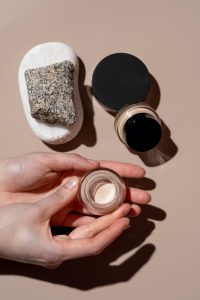Common Mistakes and How to Avoid Them

Concealer is an essential tool in every beauty routine, helping to cover up blemishes, dark circles, and other skin imperfections. However, using concealer incorrectly can actually draw attention to the very flaws you’re trying to hide. In this blog post, we’ll go over some of the most common concealer mistakes and provide tips on how to avoid them.
Do: Choose the right shade
One of the most common mistakes when it comes to concealer is choosing the wrong shade. A concealer that’s too light or too dark can make your skin look unnatural and draw attention to the area you’re trying to hide. To find the right shade, try applying concealer to the back of your hand, which is usually the closest match to your face. When testing the shade, make sure you do it in natural light.
Do: Prep your skin
Before applying concealer, it’s important to properly prepare your skin. This includes cleansing, moisturizing, and priming. Cleansing will help remove any dirt and oil from the skin, while moisturizing will hydrate and plump up the skin. Priming will create a smooth base for the concealer to adhere to, helping it to last longer and blend more easily.
Do: Blend, blend, blend
Blending is the key to a flawless concealer application. Make sure to blend the concealer well into the skin to avoid any harsh lines or edges. Use a beauty sponge, brush, or your fingertips to blend the concealer into your skin. Make sure to blend the concealer not only around the edges but also into the skin for an even and natural look.

Do: Set the concealer
Setting the concealer is important to help it stay in place and prevent creasing. You can use a translucent powder, setting spray, or a lightweight powder to set the concealer. Choose a product that won’t add any extra color or texture to the skin, as this can make the concealer look cakey.
Don’t: Use the wrong formula
There are many different types of concealer formulas, including liquid, cream, and stick. It’s important to choose the right formula for your skin type and the area you’re trying to conceal. For example, if you have dry skin, a creamy liquid concealer may work best, while if you have oily skin, a matte finish concealer may be a better choice.
Don’t: Apply too much
Applying too much concealer can make the skin look heavy and cakey. Start with a small amount and build up as needed. You can always add more, but it’s harder to remove excess concealer once it’s been applied.

Don’t: Skip the color correction
If you’re trying to cover up dark circles or redness, a color correcting concealer may be the answer. Color correctors come in different shades, such as green for redness, yellow for dark circles, and peach for dark spots. By using a color corrector before the concealer, you can help neutralize any unwanted tones and create a smooth base for the concealer to adhere to.
Don’t: Apply concealer to dry skin
If you have dry skin, it’s important to moisturize and hydrate before applying concealer. Dry skin can cause the concealer to look cakey and enhance any fine lines or wrinkles. Make sure to hydrate your skin with a moisturizer and let it sink in before applying concealer.
In conclusion, using concealer correctly can help you achieve a flawless complexion and cover up any imperfections. By following these do’s

